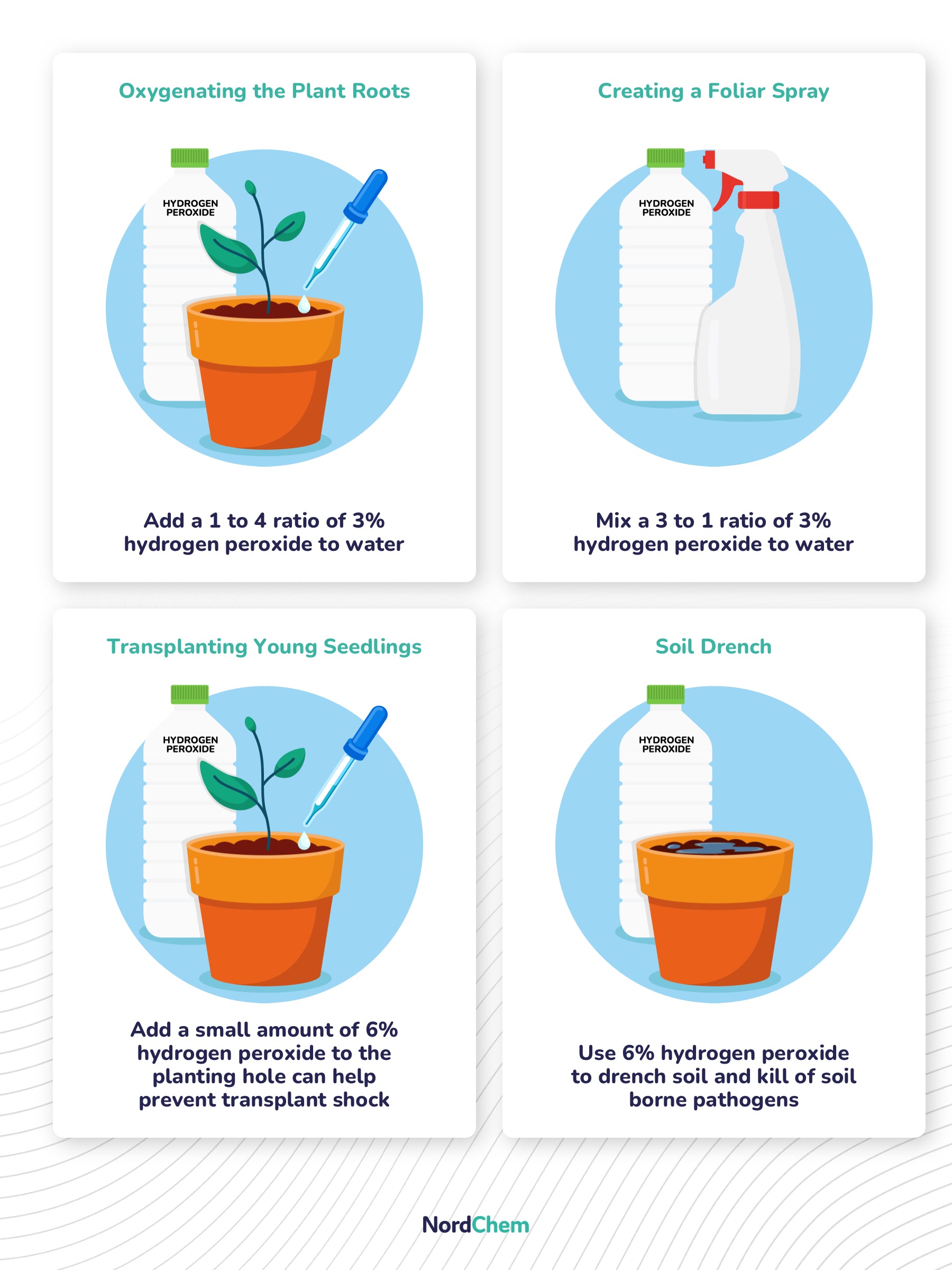Hydrogen peroxide is a versatile and inexpensive solution that can be used to benefit plants in various ways. It is often used as a natural alternative to chemical pesticides and fertilizers, and can help to promote healthy growth and prevent disease. However, it's important to use the right amount of hydrogen peroxide to avoid damaging the plants.
When using hydrogen peroxide for plants, it's important to dilute it with water to a safe concentration. A common ratio is to mix 1 part hydrogen peroxide with 3 parts water. For example, if you are using a 1 litre spray bottle, you would add 250ml of 3% to 6% hydrogen peroxide and 750ml of water.
Hydrogen peroxide can be used in a variety of ways to benefit plants, including:

- Watering: Adding a small amount of hydrogen peroxide to the water when watering plants can help to oxygenate the roots and promote healthy growth.
- Foliar spray: A 3% hydrogen peroxide solution can be used as a foliar spray to help control pests and diseases, and to promote healthy growth.
- Transplanting: When transplanting seedlings or young plants, adding a small amount of hydrogen peroxide to the planting hole can help to prevent transplant shock and promote healthy root growth.
- Soil drench: A 6% hydrogen peroxide solution can be used as a soil drench to help control soil-borne pathogens and promote healthy root growth.
It's also important to note that hydrogen peroxide should not be used on plants that are stressed or suffering from disease or pest infestation. Also, do not use hydrogen peroxide on seedlings or young plants as it can cause damage to the delicate leaves.
Always consult with a horticulturist or an expert before using hydrogen peroxide on plants, and be aware of the sensitivity of the plants.
